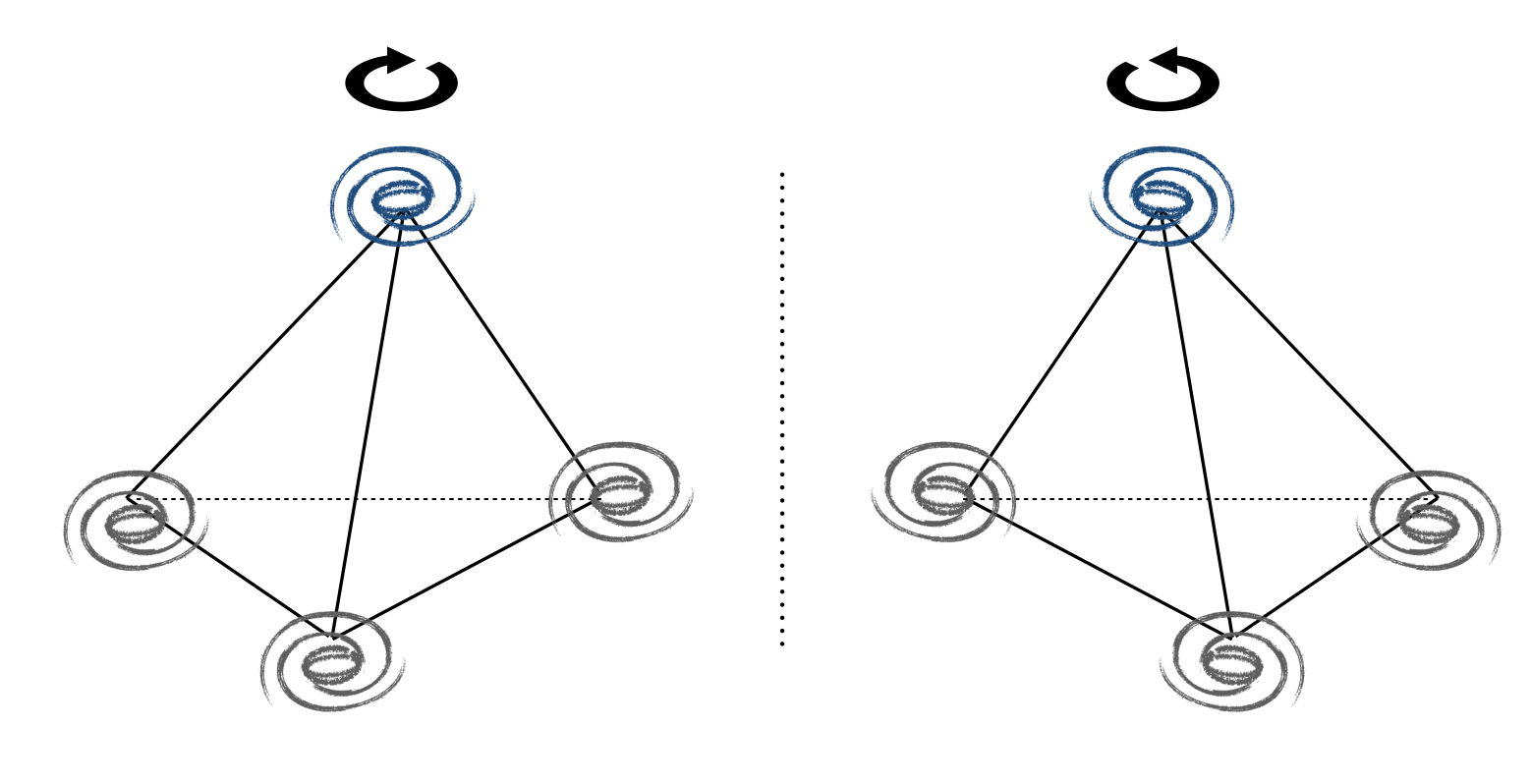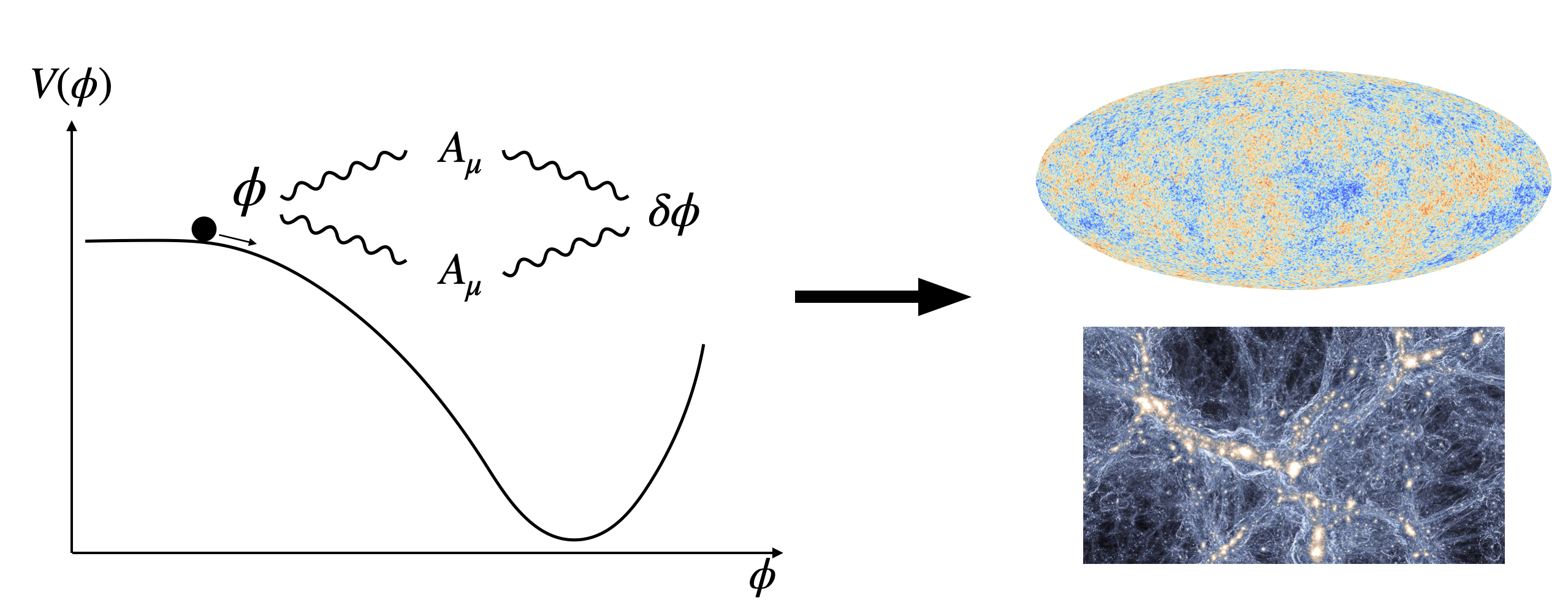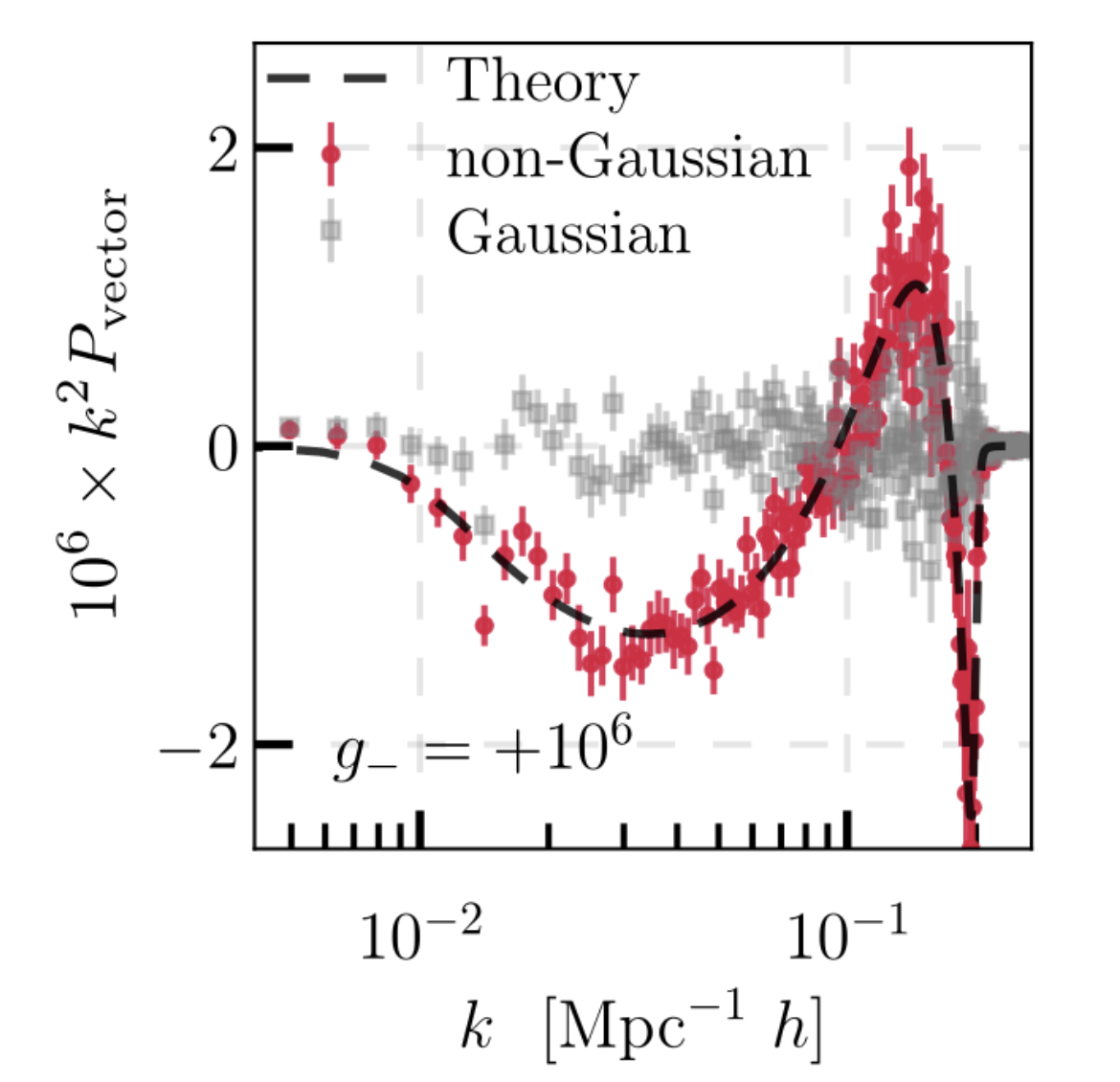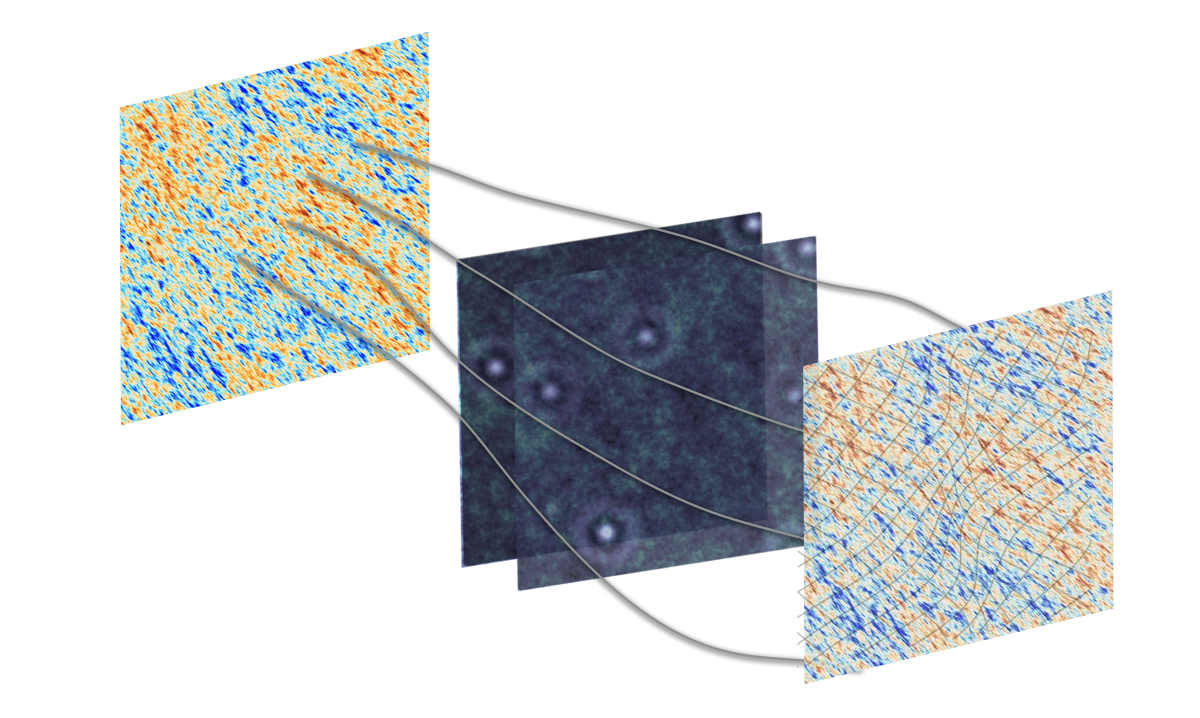Motivation
Investigating parity violation on cosmological scales addresses some of the most profound questions in modern physics. Parity violation could provide a crucial link between cosmology and high-energy physics, potentially offering a window into inflationary physics as well as the nature of dark matter and dark energy. Discovering parity-violating signals in the cosmic microwave background or large-scale structure could reveal new physics beyond the Standard Model, particularly illuminating the mechanisms underlying the observed matter-antimatter asymmetry.
4-Point Functions of Galaxy 3D Distribution
For scalar fields, the 4-point function is the lowest-order statistic sensitive to parity transformations. In the plot above, each vertex represents a galaxy, and a parity transformation applied to a tetrahedron formed by four galaxies reveals the handedness of cosmic structures.
BOSS Data Results: We employ 4-point correlation functions to isolate parity-odd information from galaxy clustering data. Our analysis of the Baryon Oscillation Spectroscopic Survey (BOSS) data yielded an intriguing indication of parity violation in large-scale structure. Although estimating statistical uncertainties remains a key challenge, these results motivate extending the framework to include complementary estimators, improved physical modeling, and new datasets.
Related Publications: JH, Slepian, Cahn (2022), arXiv:2206.03625
Cahn, Slepian, JH (2021), arXiv: 2110.12004
Philcox (2022), arXiv: 2206.04227
Extended Framework
Inflationary Model
The axion–U(1) model is one of the leading theoretical frameworks for understanding parity violation in cosmology. The axion field, originally proposed to solve the strong CP problem in particle physics, can act as the inflaton and generate primordial fluctuations that seed cosmological observables. In this model, gauge fields violate parity and transfer this asymmetry to the axion field, leaving distinctive imprints on the cosmic microwave background and large-scale structure. The connection between this inflationary model and galaxy observables manifests directly through the 4-point correlators. In Reinhard et al. (2024), we further explored simplifications of the 4-point correlator integral, as a step toward making the link between the model and observables more tractable.
Related Publication: Reinhard ++ JH ++ (2024), arXiv: 2412.16037
Alternative Estimator
4-point functions involve a high-dimensional data vector, which poses challenges for obtaining reliable error bars, particularly in covariance estimation. Moreover, the range we currently explore is sensitive only to certain tetrahedral configurations. Compressed estimators, such as the parity-odd power spectrum, offer a way forward. They reduce the effective degrees of freedom and are sensitive to different tetrahedral shapes than those probed by the 4-point statistics.
Related Publication: Jamieson ++ JH ++ (2024), arXiv: 2406.15683
Cosmological Probes
In addition to galaxy clustering, various cosmological probes can be sensitive to parity violation. One example is CMB lensing. As CMB photons travel from the last scattering surface to us, their paths are deflected by the intervening large-scale matter distribution. This gravitational lensing effect remaps the observed temperature and polarization fields of the CMB, encoding valuable information about the growth of structure and the geometry of the universe. If primordial parity-violating mechanisms exist, traces of this physics could survive in the lensing convergence map, providing a complementary probe to large-scale structure analyses.
Beyond CMB lensing, we are also working on other cosmological probes, stay tuned!
Related Publication: Grecco ++ JH ++ (2025), arXiv: 2505.15789



